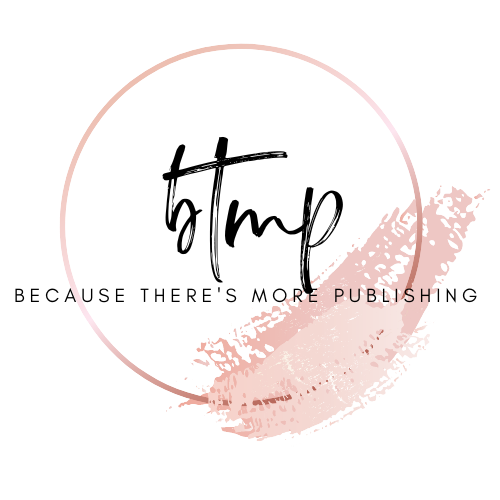Book Outlining Series – Week 2: Choose Your Outline Structure
Book Outlining Series
Week 2: Choose Your Outline Structure
Writing a book is an exciting journey, but without a solid outline, it’s easy to lose direction. An outline provides structure, helping you organize your ideas, develop a strong narrative, and stay on track throughout the writing process. However, there is no single method that works for everyone. Writers have different styles, and the best outlining approach is the one that complements your creative process.
In this second installment of our Book Outlining Series, we will explore different outlining methods to help you determine which structure best suits your book.
Why an Outline Matters?
An outline acts as a roadmap for your book, guiding you through the writing process while ensuring your ideas are cohesive and well-organized. It helps you:
- Maintain a clear direction from beginning to end
- Prevent writer’s block by providing a structured plan
- Strengthen character arcs, plot development, and pacing
- Identify potential gaps or inconsistencies in the storyline
- Stay focused on your book’s central message and theme
Choosing the right outline format will give you the flexibility you need while keeping your book structured and engaging.
Popular Outline Methods
1. Chronological Outline
The chronological method organizes events in the order they happen. This approach is ideal for:
- Memoirs and autobiographies, where events are told in a linear timeline
- Historical fiction, where accuracy in sequencing is essential
- Nonfiction books, such as case studies or real-life experiences
By following a chronological approach, you ensure that your narrative flows smoothly and readers can easily follow the progression of events.
2. Thematic Outline
The thematic method groups sections based on recurring themes or motifs. Instead of focusing on a timeline, this approach organizes content by ideas or central themes. This method is best for:
- Self-help and personal development books, where each chapter addresses a different principle or life lesson
- Essay collections, where individual pieces connect through common themes
- Faith-based books, where topics such as grace, forgiveness, and purpose are explored in depth
A thematic outline allows you to create a more flexible structure that connects ideas in a meaningful way.
3. Character-Centric Outline
A character-focused outline prioritizes the development and journey of key characters in a book. This method works well for:
- Novels and fiction books, where character arcs drive the story
- Biographical fiction, where real-life figures are at the heart of the narrative
- Multi-perspective storytelling, where different character viewpoints shape the story’s direction
By outlining the growth, struggles, and transformations of each character, you create an emotionally engaging story that resonates with readers.
4. Plot-Driven Outline
A plot-driven approach focuses on key twists, conflicts, and turning points within the story. This is an excellent choice for:
- Mystery and thriller novels, where suspense and revelations are critical
- Fantasy and science fiction books, where intricate world-building and major plot developments take center stage
- Dramatic narratives, where rising tension and resolution are central to the story
Plot-driven outlines emphasize story structure, ensuring that each scene builds toward a compelling climax and resolution.
5. The Classic Outline
The traditional outline method uses Roman numerals, bullet points, and a clear hierarchical structure to break down the book into sections and sub-sections. This is an effective approach for:
- Nonfiction books, such as academic works, business guides, or teaching manuals
- How-to books, where step-by-step instructions need a clear framework
- Well-structured fiction, where authors prefer a detailed chapter-by-chapter breakdown
This structured approach helps writers stay organized and maintain logical progression throughout the book.
6. The Mind Map Method
A mind map is a visual representation of ideas, allowing writers to brainstorm and connect concepts in a non-linear way. This is an excellent method for:
- Writers who prefer a more flexible, creative approach
- Visual thinkers who like to see the bigger picture before committing to a linear structure
- Complex narratives that interweave multiple themes, settings, or character arcs
By mapping out key ideas and drawing connections between them, you can see how different elements of your book relate to one another.
7. The Snowflake Method
The Snowflake Method starts with a simple idea and expands it layer by layer. Writers begin with a one-sentence summary, then expand it into a paragraph, then into a full-page synopsis, and so on. This method is particularly useful for:
- Fiction writers, who want to build their story gradually while maintaining flexibility
- Complex narratives, where different elements need to be developed simultaneously
- Writers who struggle with traditional outlines but still need structure
This method allows for organic growth, ensuring that every aspect of the book is well thought out before diving into the full draft.
8. Chapter Summary Approach
This method involves briefly outlining each chapter’s key points. It provides a high-level overview of the book’s structure without diving into excessive detail. It works well for:
- Writers who prefer some flexibility while maintaining a roadmap
- Nonfiction books, where each chapter covers a distinct topic or lesson
- Fiction writers, who want to develop a broad framework before refining details
By summarizing each chapter’s key elements, you ensure that the book flows logically from beginning to end.
Choosing the Right Outline for You
here is no right or wrong way to outline your book. Some writers prefer detailed planning, while others thrive with a more fluid approach. The key is to find a method that:
- Aligns with your writing style
- Keeps you motivated and organized
- Helps you effectively communicate your message
If you are a highly structured writer, classic outlines or chapter summaries may work best. If you prefer creativity and flexibility, mind maps or the Snowflake Method could be a better fit. You can also combine different methods to create a system that works specifically for you.
In summary, an outline is one of the most powerful tools you can use as a writer. Whether you are working on a novel, nonfiction book, or poetry collection, a clear structure will help bring your vision to life.
As we continue our Book Outlining Series, we will guide you step by step to ensure that your outline is effective and ready to support the writing process.
Stay tuned for Week 3: Develop Your Plot!
Book Outlining Series – Develop Your Plot
In Week 3 of our Book Outlining Series, we’re diving into the heart of storytelling:...
Read MoreBook Outlining Series – Choose Your Outline Structure
Struggling to organize your book? In Week 2 of our Book Outlining Series – Choose...
Read MoreBook Outlining Series – Define Your Goals
Start your book with a clear purpose! In Week 1 of our Book Outlining Series...
Read More
